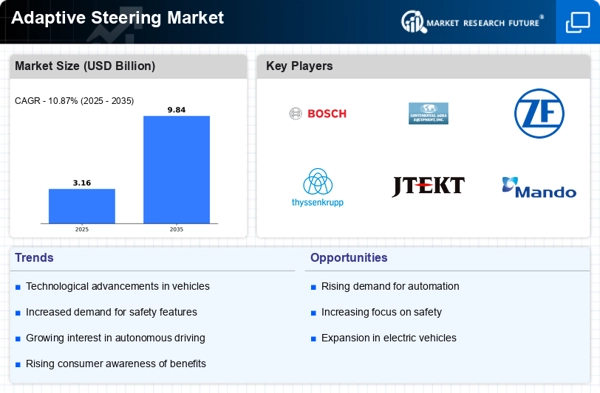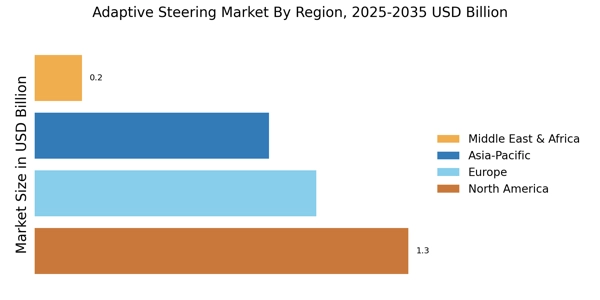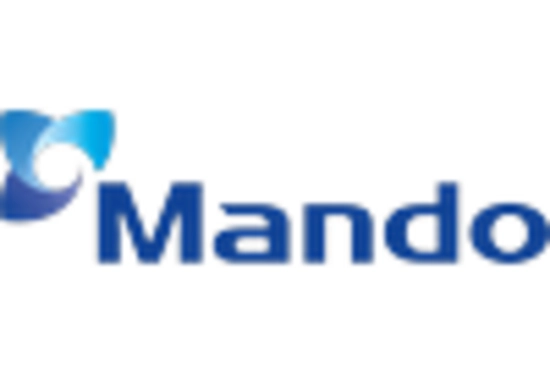Regulatory Push for Safety Standards
The Adaptive Steering Market is also influenced by a regulatory push for enhanced safety standards in the automotive sector. Governments are increasingly mandating the incorporation of advanced safety features in vehicles, including adaptive steering systems that can mitigate accidents and improve driver control. For example, regulations in various regions require new vehicles to meet specific safety benchmarks, which often include advanced steering technologies. This regulatory environment is expected to drive market growth, as manufacturers strive to comply with these standards. The adaptive steering market could see an increase in adoption rates, as compliance with safety regulations becomes a critical factor for vehicle manufacturers.
Growth of Electric and Hybrid Vehicles
The rise of electric and hybrid vehicles is significantly impacting the Adaptive Steering Market. As these vehicles become more prevalent, the demand for advanced steering technologies that complement their unique driving dynamics is increasing. Adaptive steering systems are particularly well-suited for electric vehicles, as they can enhance energy efficiency and improve maneuverability. Market analysis suggests that the electric vehicle segment is projected to account for over 40% of the automotive market by 2030, which will likely drive the adoption of adaptive steering technologies. This trend indicates a promising future for the adaptive steering market as it aligns with the broader shift towards electrification in the automotive industry.
Increased Investment in Research and Development
Investment in research and development is a key driver for the Adaptive Steering Market. As competition intensifies among automotive manufacturers, there is a growing emphasis on innovation and the development of cutting-edge steering technologies. Companies are allocating substantial resources to explore new materials, algorithms, and integration techniques that enhance the performance of adaptive steering systems. This focus on R&D is expected to yield advancements that improve system reliability and functionality. Market forecasts indicate that R&D spending in the automotive sector could increase by 15% annually, further propelling the adaptive steering market as manufacturers strive to differentiate their offerings in a competitive landscape.
Technological Advancements in Automotive Engineering
The Adaptive Steering Market is experiencing a surge due to rapid technological advancements in automotive engineering. Innovations such as real-time data processing and advanced sensor technologies are enhancing the capabilities of adaptive steering systems. These systems are designed to adjust steering response based on driving conditions, thereby improving vehicle handling and safety. As manufacturers increasingly integrate these technologies, the market is projected to grow significantly. For instance, the adaptive steering segment is expected to witness a compound annual growth rate of over 10% in the coming years, driven by the demand for smarter and more responsive vehicle systems.
Rising Consumer Demand for Enhanced Driving Experience
Consumer preferences are shifting towards vehicles that offer a superior driving experience, which is propelling the Adaptive Steering Market. Drivers are increasingly seeking features that enhance comfort, control, and overall driving pleasure. Adaptive steering systems provide variable steering ratios that adjust based on speed and road conditions, thereby offering a more tailored driving experience. This trend is reflected in market data, indicating that nearly 30% of new vehicle buyers prioritize advanced steering technologies. As automakers respond to this demand, the adaptive steering market is likely to expand, with manufacturers investing in research and development to create more sophisticated systems.


















Leave a Comment